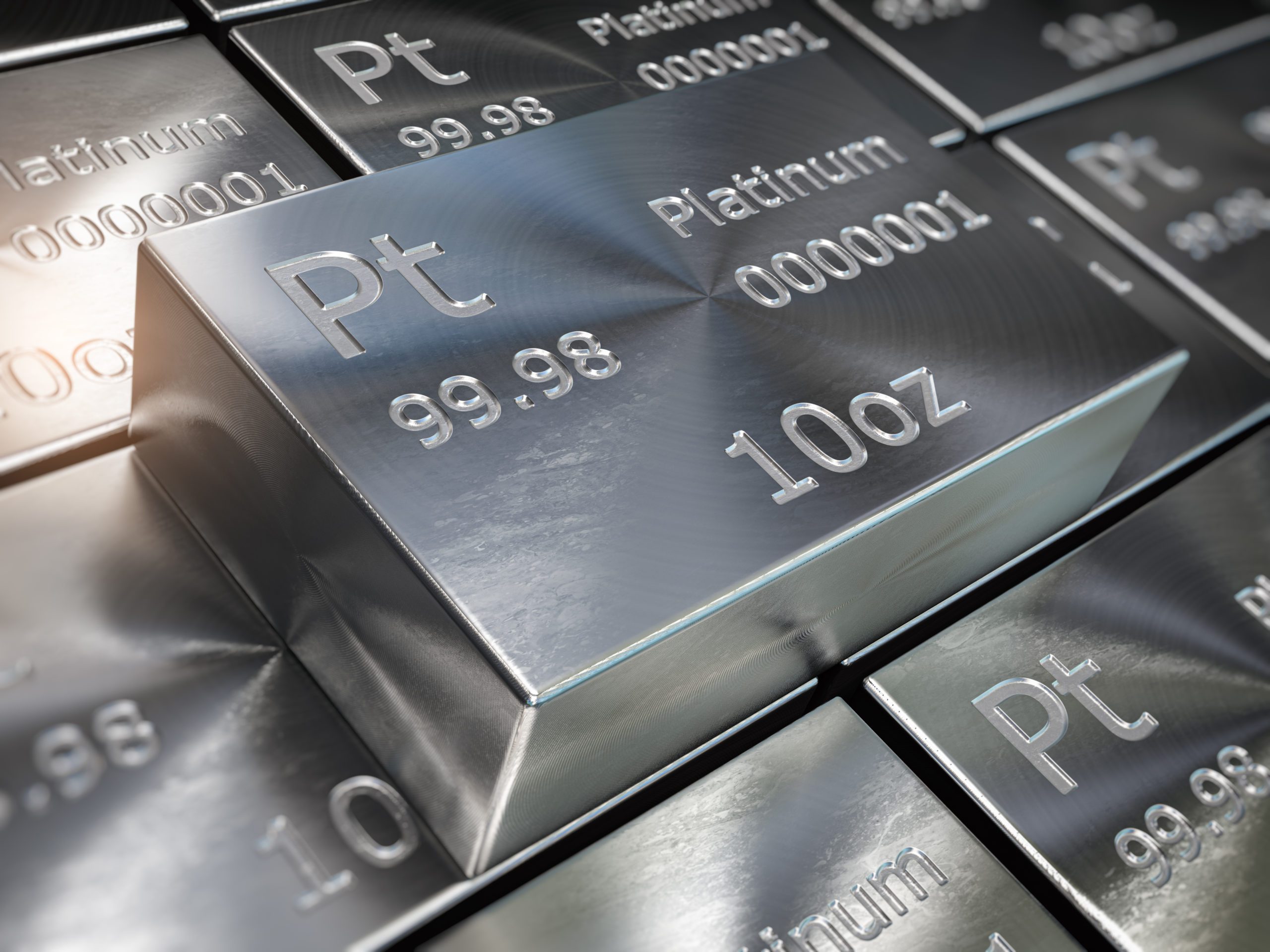Of the most popular precious metals – gold, silver, platinum and palladium – platinum is the rarest of all. This silvery-white metal has a wide range of uses. While many people associate platinum with jewelry, it’s also used in dental crowns, medical equipment, catalytic converters, pacemakers and more.
Platinum is part of a family of six metals known as the platinum group metals (PGMs), which also includes palladium, rhodium, iridium, osmium, and ruthenium. These metals often occur together in nature and share similar chemical properties.
As a highly valuable metal, platinum’s spot price has ranged from about $878 to $1,084 per troy ounce so far in 2024.
Let’s take a closer look at this treasured element!

Platinum Is Extremely Rare
Platinum is 30 times rarer than gold, and the global production of gold is nearly 14 times more than that of platinum! This is why platinum is sometimes referred to as “rich man’s gold.”
The majority (about 80%) of the world’s platinum comes from mines in South Africa, according to the U.S. Geological Survey.
Platinum’s Name Means ‘Little Silver’
Archaeologists have discovered traces of platinum used in Egyptian burials dating back to 1200 BCE. Pre-Colombian Americans also presumably used platinum in the La Tolita Culture (600 BCE to 200 CE).
But in Europe and Asia, platinum was largely unknown for a long time.
The first European reference to platinum occurred in 1557 in the writings of Italian humanist Julius Caesar Scaliger. Scaliger described an unknown noble metal found in Mexico that couldn’t be melted.
The Spanish began encountering platinum around this time, too. They saw it as an impurity of gold and silver, and often threw it away! (Can you imagine?!)
The Spaniards dubbed the metal platina, which means “little silver.” The English word “platinum” is derived from the Spanish root platina.
Platinum May Have Astronomical Origins
The leading theory among scientists is that platinum, along with gold and other heavy elements, was formed in supernova explosions or neutron star collisions billions of years ago. It’s believed that these cosmic events produced heavy elements that were later incorporated into the Earth. However, some researchers are now calling this hypothesis into question following the observation of an extremely bright gamma-ray burst (GRB) a couple years ago.
Referred to as B.O.A.T. (Brightest of All Time), a super bright GRB was observed by a team of researchers in 2022. Using NASA’s James Webb Telescope, the team confirmed that B.O.A.T. was the result of a supernova explosion. But a shocking analysis found no signs of gold or platinum!
Dr. Peter Blanchard, who led the analysis, stated, “We did not see signatures of these heavy elements, suggesting that extremely energetic GRBs like the B.O.A.T. do not produce these elements. That doesn’t mean that all GRBs do not produce them, but it’s a key piece of information as we continue to understand where these heavy elements come from. Future observations with JWST will determine if the B.O.A.T.’s ‘normal’ cousins produce these elements.”
We’ll see what unfolds as we discover more about the cosmic origins of heavy elements like platinum!
Platinum is Found in Alluvial Deposits
No matter how platinum got here, we know where it’s found on the Earth – in alluvial deposits of riverbeds, floodplains and deltas.
Much of the world’s platinum comes from South Africa and Russia. The United States produces some platinum too, although our output has declined in recent years. The Stillwater Complex in Montana is the main source of platinum in the U.S., and palladium is found there as well.
Platinum is Chemically Stable
Platinum is largely inert, but not completely inert – it can react with certain chemicals under specific conditions, like with chlorine at high temperatures for example. But for most intents and purposes, platinum is chemically stable. Similarly to gold, platinum is exceptionally resistant to corrosion and tarnishing. It does not oxidize in air, which is why it’s often used in jewelry and other high-value items.
Platinum Has Catalytic Properties
Platinum is a highly effective catalyst and commonly used as such because it’s reusable and efficient. For example, platinum is a key component of catalytic converters in automobiles, helping to reduce emissions by converting toxic gases like carbon monoxide into less harmful substances like carbon dioxide. In fact, nearly half of the world’s mined platinum is used in vehicle catalytic converters, according to Total Materia.

Platinum is Prized in the Jewelry Industry
While platinum has a high bullion value, it’s even more expensive in the jewelry industry! Most platinum jewelry has a high purity rating, containing about 85% to 95% pure platinum. Platinum jewelry is generally much purer than gold jewelry. 18-karat gold, for example, contains only 75% gold. But when it comes to platinum, jewelry isn’t even considered “platinum” if it’s less than 80% pure.
High purity plays a role in platinum jewelry’s high price tag, along with the fact that it’s more difficult for jewelers and metalsmiths to create. Crafting platinum jewelry requires specialized tools, higher temperatures, and greater expertise.
A Rare and Useful Metal
Whether it’s sparkling on a piece of jewelry or reducing vehicle emissions, platinum’s allure and utility are undeniable. As scientists uncover more about its cosmic origins and continue finding innovative uses for it, platinum’s value and significance will only continue to grow.
Recycling Platinum
As an incredibly rare and valuable natural resource, platinum should always be recycled when it’s no longer deemed usable. Refining precious metals like platinum is the most responsible way to ensure that they won’t get to waste, but rather recirculated back into the market to take on a new purpose.
Garfield Refining has been refining platinum for over a century. If you ever have platinum, gold or other precious metals that you’re looking to sell, Garfield will get you the highest payment for your metals, and our process couldn’t be easier!
If you’re interested in learning more about platinum and other precious metals, check out our other blog posts like ‘What Are Platinum Group Metals?’ and ‘A Closer Look at Platinum.’
Are you looking to sell unwanted platinum or gold? Fill out this form to get started today!
Established in 1892, Garfield will get you the most for your gold, silver, platinum, and palladium, and we offer the industry’s best customer service.

